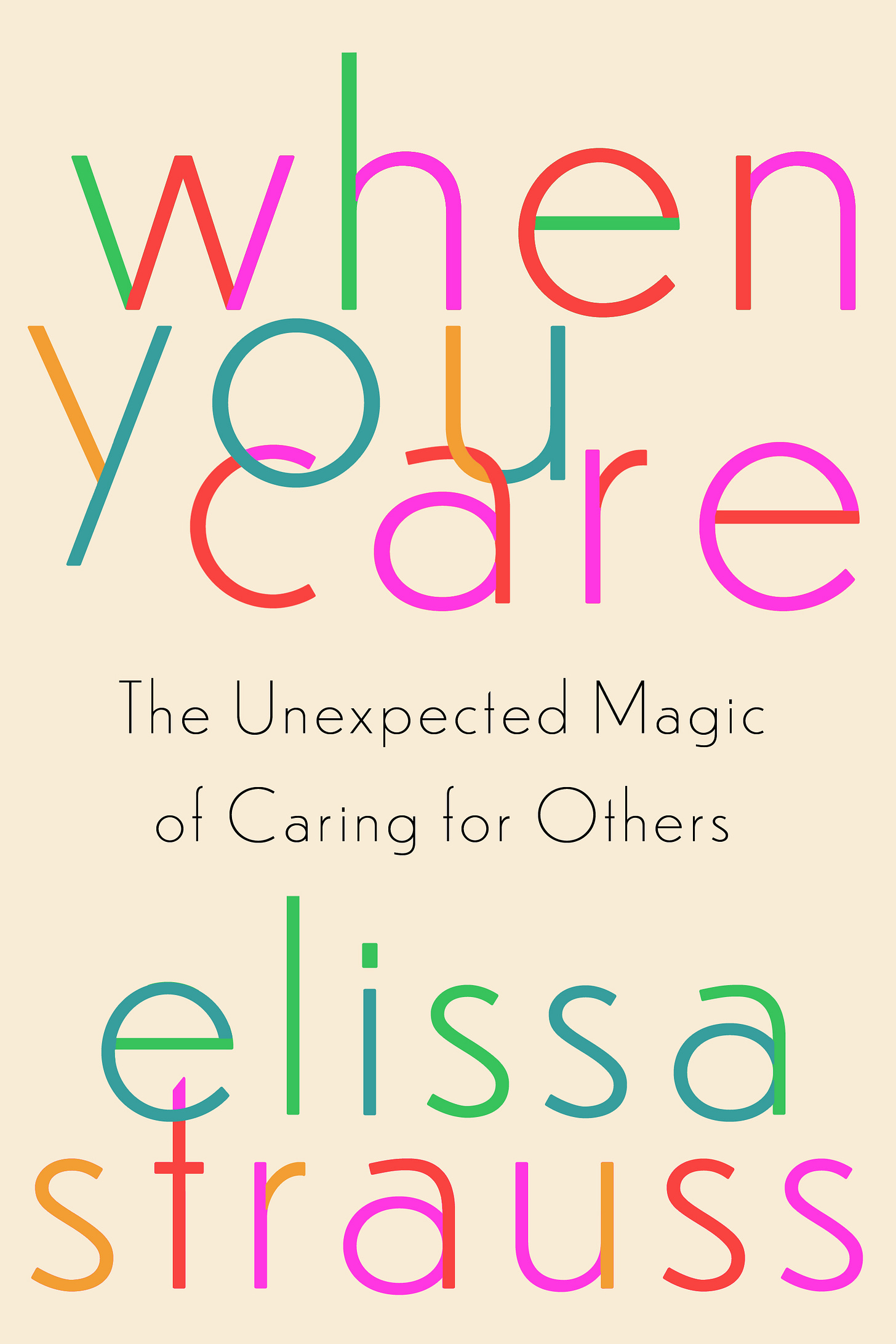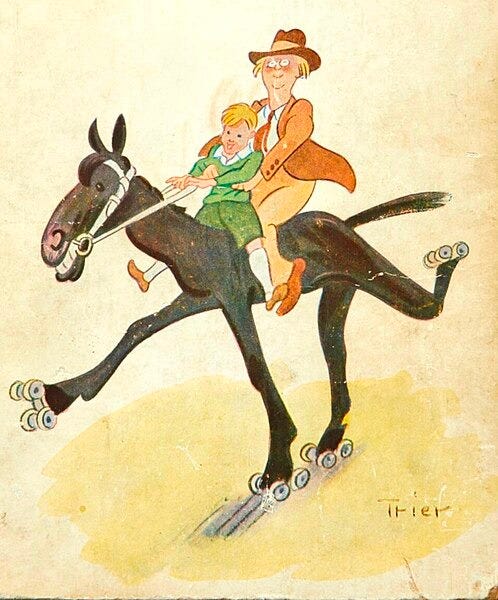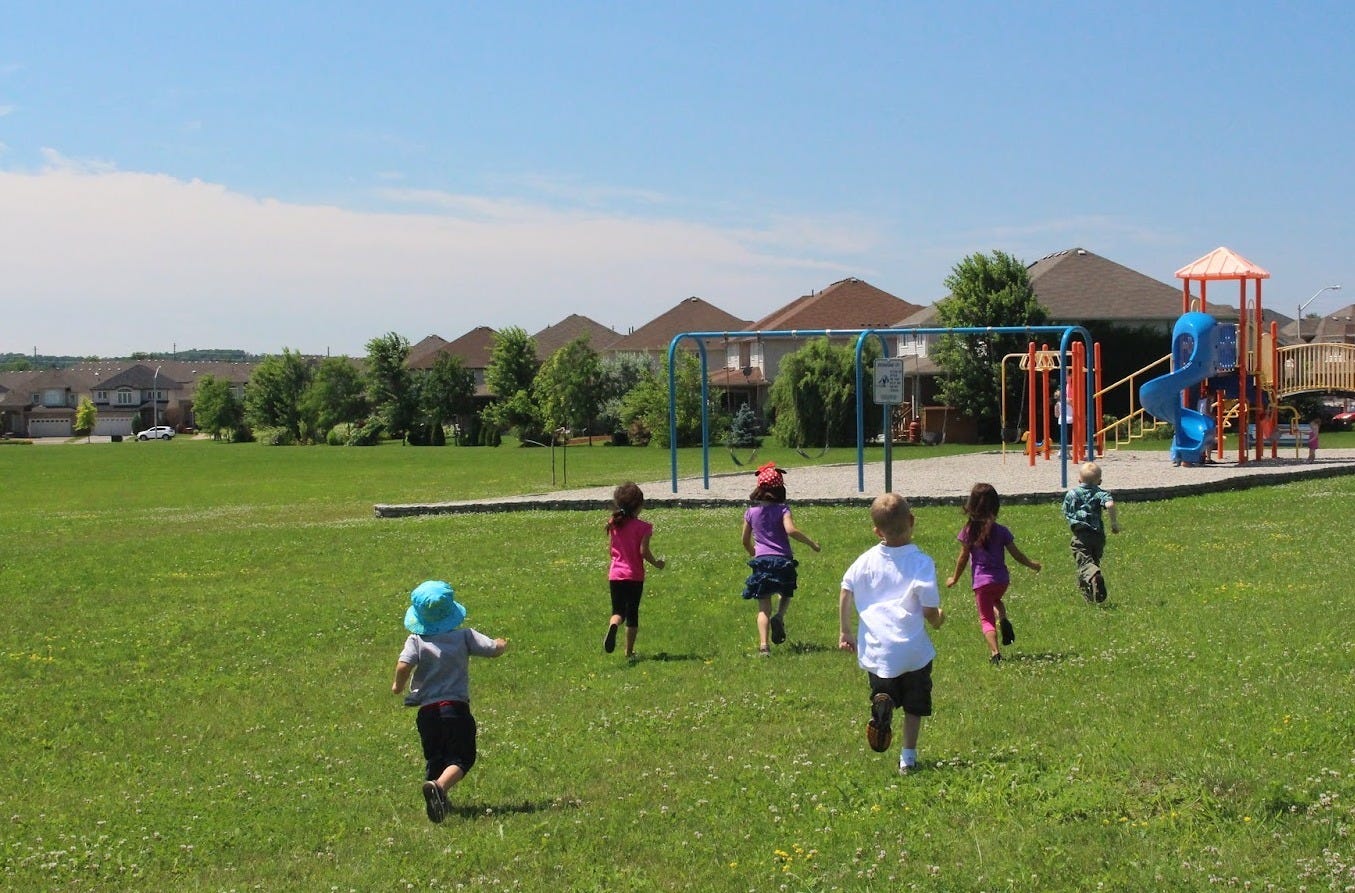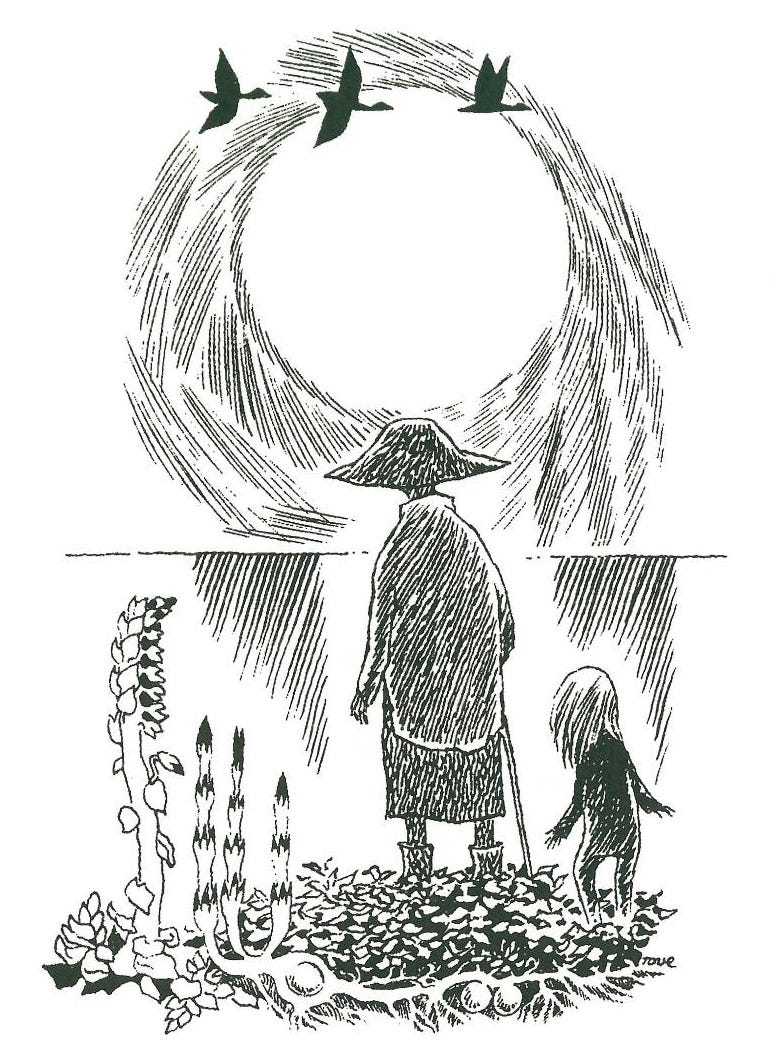THE RESTACK Why We’re So Weird Around Other People’s Children
Lisa Sibbett on how to befriend kids
Welcome to Made with Care, a newsletter and community for people who dream of a world in which parenting and caregiving isn’t only valued and supported, but treated with the curiosity and fascination it deserves. I’m obsessed with understanding how parenting and caregiving —dependency care—got left out of nearly all of our meaning-making systems.
Every month, all subscribers will receive THE ROUND-UP, a list of curated recommendations around a theme; THE ESSAY, a piece of memoir-laced cultural criticism by me; and THE RESTACK, an often new—but sometimes old—essay from one of my favorite fellow care-obsessed Substackers.
Paid subscribers will also receive THE INTERVIEW, a deep dive into care with interesting thinkers from a wide variety of disciplines and political persuasions, and access to THE CONVERSATION, live seminars and convenings exploring care.
Annual paid subscribers get a free copy of my book, “When You Care.”
Thank you to everyone who subscribes, with special gratitude to my paid supporters.
Welcome to my first ever RESTACK, a once-a-month sharing of a favorite newsletter by a writer I admire.
Today, I am delighted to share a post written by
, author of the phenomenal . She writes wisely and sensitively about “people who choose to be involved in the lives of kids who aren’t our own.”If you are thinking, “that doesn’t really apply to me,” you are wrong. This should be all of us—whether or not we have kids of our own.
The more we embrace honorary auntiedom and uncledom, the more we accept our evolutionary reality that kids are way too demanding to be raised by a parent or parents alone, and the more we see a collective embrace of children as an essential part of ending social isolation, the better off we will all be.
It’s hard to build tight and meaningful communities if children aren’t welcome in them.
And yet, there is an atmospheric, anti-kid vibe in our culture these days. On social media, in restaurants, and stores, children are often treated like an inconvenience. Last month I was on an airplane and a flight attendant attempted to punch up her safety shtick with this charming joke: “If you are traveling with a child…(she pauses, we expect her to continue with standard language about gas masks)...we don’t know why.” The joke got a big laugh. Few seemed to notice the look of shame and despair on the faces of the parents with young kids.
But as psychology tells us, hatred is often rooted in fear.
We are unprecedentedly generationally segregated these days, meaning people interact less and less with others outside of their age group. This makes it all-too-common for child-free adults to have limited exposure to children. This lack of experience makes these grown-ups terrified of those moments when they are face-to-face with a child.
Also, we are all more isolated these days, lonely and “bowling alone,” which inevitably leads to adults with children spending less time with children who aren’t their own. This lack of experience creates anxiety which is then compounded by the rise of hyper-scripted parenting advice on social media. Parenting expert culture has made us all feel like we should avoid talking to anyone else’s children, lest we say the wrong thing.
Lisa is here to help!
Her essay isn’t just practical advice, but a big, bold worldview which privileges the effort to connect over achieving particular outcomes. May we all be inspired by it. May we all try her advice out with the kids—and maybe even adults—in our lives. May we feel more connected as a result.
And may that flight attendant get a better joke.
On Befriending Kids
Kids don't want to make polite conversation. Here's what they want to talk about instead.
There’s a nine year old in my life who I only see occasionally because he and his family live in another state. He’s historically had approximately zero interest in grownups, and clearly doesn’t enjoy answering polite questions about how he likes school. He just wants to play baseball and do taekwondo and swarm around the neighborhood with his friends. Yet he and I are tight: I am a kid whisperer.
I’m proud of this skill because it can be hard to build and maintain relationships with the kids in our lives. The younger the child, the longer any interval of absence must seem to them: for a one year old, three months is a full quarter of their life. That’s the equivalent of me, at 44, not seeing someone for eleven years. When kids are little, you basically have to reintroduce yourself every time. Then there’s the impact of distance: according to the Auntie Bulletin Reader Survey, nearly half of this newsletter’s readers have to get on a plane to see the important kids in our lives. So we may go a year or two or more between visits with the kids we love – and in that time, they’ve pretty much forgotten us.
This means that maintaining kinship ties can require a lot of befriending and re-befriending the children we love. Through nearly thirty years of Auntiehood, plus a lot of years of studying child development as a teacher and education researcher, I’ve gotten good at making connections with kids, and today I’m going to share some things I’ve learned. (I’m focusing on pre-teens, but parts will be relevant to teenagers as well).
Make conversation easy and interesting for kids.
Adults often make the mistake of asking children polite, open-ended questions about their lives. “How do you like school?” “What do you want to be when you grow up?” “Did you have fun at gymnastics?” Most kids are capable of having these conversations, but they’re rarely interested in having them with strangers. This is essentially small talk, and small talk requires a willingness to pay attention to someone you hardly know talking about a topic you may not really care about. Kids are rarely up for that.
Fortunately, you can make conversation easier on them by going first, and offering (interesting!) information. In the world of education, we call this lightening the cognitive load. Making your own contribution at the outset lets a kid get a feel for what you’re all about, while also supplying specific content for them to respond to.
Instead of “How do you like school?” tell them in a sentence or two about a silly teacher you had, a surprising playground incident you witnessed, or a kid you knew who could do a cool trick.
Instead of “What do you want to be when you grow up?” tell them what you wanted to be when you grew up, and maybe what your friends wanted to be, too.
Another way to lighten the load on kids is to ask what amounts to a multiple choice question. Multiple choice questions are common on tests and surveys of all kinds because they require less effort, so people are more likely to answer them. This format is also nice because it gives you an opportunity to throw in a silly option.
Instead of “Did you have fun at gymnastics?” try “Did you love gymnastics today or hate it?” or “Which do you like better, gymnastics or drawing? Or sitting silently in the dark doing nothing?”
Instead of “What’s your favorite food?” you could ask, “Which food do you like best: pizza, ramen, or fish guts?”
One of the most successful conversation gambits with kids, I’ve found, is to actually not expect them to respond at all. Just lob one or two kid-friendly observations in their direction and see what happens.
“On my way here I saw a tractor with the most gigantic tires I have ever seen! They were bigger than my car! I was like, ‘whaaaat????’”
“Look at that, we both have boots. But yours have stripes and mine have no stripes. No fair! I want stripes on my boots! Maybe we should trade.”
“I see you’ve got a Pokémon binder there. Believe it or not, I know nothing about Pokémon! The only one I can even name is Pikachu!”1
Whether the kid responds or not, after your first foray, walk away and give them some space to decide what they think of you. In a little while, mention another topic they might be interested in. Wait for them to come to you. Chances are, pretty soon they’ll run up with something they want to say. When that happens, chat away! Just be ready for them to scamper off again pretty quickly, possibly in the middle of a sentence.
As you get acquainted, pay attention to the kid.
Adults who aren’t confident with children often spend their whole time around kids talking to the grownups. This may seem obvious, but I know a number of parents who wish their own parents (that is, their kids’ grandparents) would actually interact with their children. Sometimes adults don’t interact with kids because they’re not really interested or don’t like kids. Fair enough – not Auntie material.
In other cases, though, adults don’t interact with kids because they don’t know what to say (in which case, see above) or just aren’t used to it. If that’s you, you can cultivate the skill of paying intermittent attention to what the kids are doing. If they’re doing something cool, mirror that back to them and convey your legit respect. Say, for example, a kid is just crushing it on the monkey bars: “Wow! That’s like your eighth time across the monkey bars! Do you never get tired?? I would be so tired!” If they want you to play a game with them or read them a book, agree to their ask, or if you prefer, suggest a different activity.
One important way of paying attention to kids is to notice when they’re doing something obnoxious or dangerous and firmly but kindly put a stop to it. You’re going for what educators call the warm demander approach to behavior management. You’re not a pushover who ignores shenanigans or allows kids to make unsafe choices, but you’re also not a hard-ass who blames or shames. By telling a kid they can’t wear their muddy shoes in the house or shout at the dinner table, by scooping them up when they’re toddling toward the street or putting your body between them when they’re pulling each other’s hair, you show that you’re paying attention, that you love them, and that you are part of their clan. Warmly, firmly laying down the law is an important enactment of kinship.
Befriending kids is building kinship.
That nine year old I mentioned? Once, near his birthday, I was joking with him that all the presents awaiting him were from me (in reality he knew that none of them were, because I don’t give gifts – a post for another time). But I was insisting that I had definitely gotten him tons of presents and nobody else had, because I am the best and I love him the most, and he was laughingly, exasperatedly trying to prove me wrong. Finally, he tried: “Well, what if it turns out I don’t like any of the presents?” I responded: “Then they’re from your parents.” We cracked up.
This is a special memory because I was (and remain) impressed with my own wit, but also because a few days prior to that, this kid wouldn’t talk to me or even look at me – or any adults besides family. It felt wonderful to make it inside this skeptical child’s trusted circle, and the experience also emerged, for him, as an important step in learning to connect with grownups. These days, he’s become a pro at relating to trusted, reliable adults outside his own family. So in sum, our friendship has been a gift for us both.
But I didn’t prioritize connecting with this child purely for his sake, nor only for my own. I also did it out of love for his mom, who is one of my dearest friends. The dominant model of kinship in the United States – the nuclear family model – expects each household to fend for themselves. This is not only unsustainable for parents, it’s also lonely. In my experience, genuinely connecting with children may help their parents feel a little less alone, a little more like people have their back. I want my loved ones who are raising kids to feel seen and supported, to be able to trust that there are many adults who love and will always care for their children. All people who are raising kids should get to feel that.
Befriending kids isn’t just about warm fuzzy feelings, however. Making connections with our loved ones’ kids is really about strengthening kinship relations – those networks of interdependence that, we hope, will catch us when our impoverished social safety nets fail. With few exceptions, elected leaders in the U.S. have been unwilling to enact policies that genuinely support kids, families, and the most vulnerable members of society. Therefore, dammit, we need to build our safety nets ourselves. We do this one connection at a time, modeling a collectivist way of showing up for one another that our children can carry and share into the future.
A BIG THANKS TO
FOR LETTING ME SHARE HER WORK!








I wish we lived in a world where it was acceptable for men to spend time with children.
Thank you for this! As the only child from a 4 girl home to have a child (we come from a very "kids are brats" family ideology), it was heartbreaking to experience how little my siblings and parents wanted to be actively involved.
But what warmed my heart and has since served as a gift to our new life as overwhelmed parents, is one friend couple—who don't have kids of their own—who have become our daughter's honorary auntie and uncle. She gets so excited to see them and they adore her. When they come over for dinner, it just flows so naturally, giving us a much-needed break ... to—without being yanked at to play—cook dinner. lol.
As they sit on the floor and giggle and toss and play with her, they always inevitably ask, "What can we do to help?" And we reply, emphatically: "What you are doing RIGHT NOW is the most help we could ever ask for." Seeing people make your child laugh is the greatest fortune.
How this wonderful couple both A) knows exactly how to play and B) enjoys doing so, still baffles me. Few of our other non-parent friends are like this, but they're truly missing out on such fulfilling, joyful times.